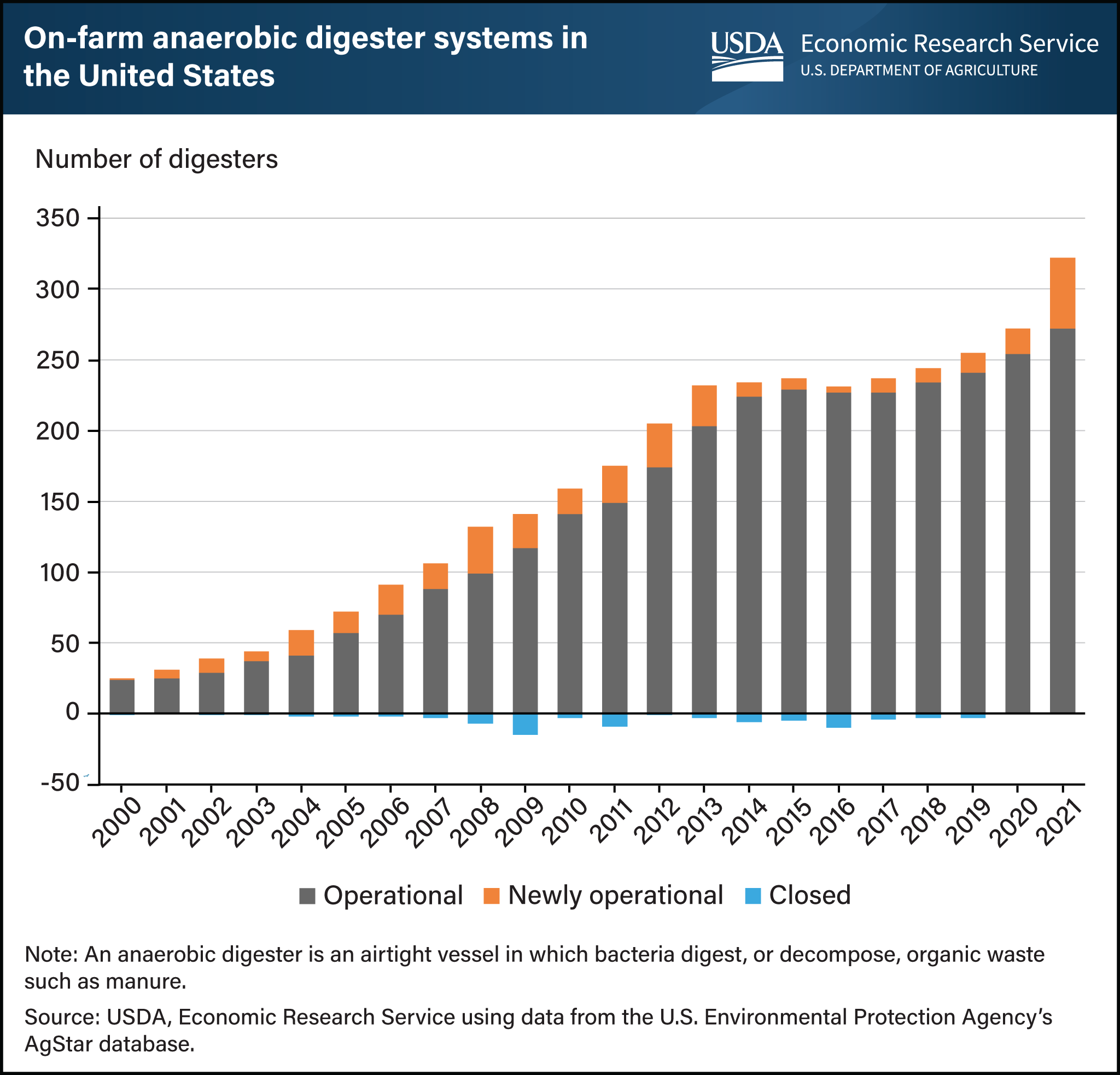Number of on-farm anaerobic digesters systems used to decompose organic waste has increased over time
- by Nigel Key and Laura Dodson
- 3/15/2023

The number of on-farm anaerobic digester systems has steadily increased since 2000, according to AgSTAR, a collaborative program sponsored by the Environmental Protection Agency and USDA. An anaerobic digester is an airtight vessel in which bacteria digest, or decompose, organic waste such as manure, and the resulting biogas can be used to generate electricity or sold. A total of 322 on-farm systems were in operation at the end of 2021, including 50 that started operating that year. Recent growth in the number of digesters corresponds to increased demand for renewable fuel as a result of carbon credit trading and incentive programs. Further, more covered lagoons have been built as their costs have decreased. Although adoption began in the 1970s, steady growth of on-farm anaerobic digestion systems in the United States did not pick up until the 1990s. Growth then persisted until about 2013, after which it slowed considerably, then began increasing again. Many of the newer digester projects are designed to produce compressed natural gas that can be injected into pipelines to take advantage of carbon credit-trading programs such as California’s Low Carbon Fuel Standard program. Roughly 78 percent of all on-farm anaerobic digestion facilities in the United States are found on dairy farms. Digester adoption is highest in California, Wisconsin, and Pennsylvania. This chart appears in the Economic Research Service report, Increasing the Value of Animal Manure for Farmers, published March 2023.


